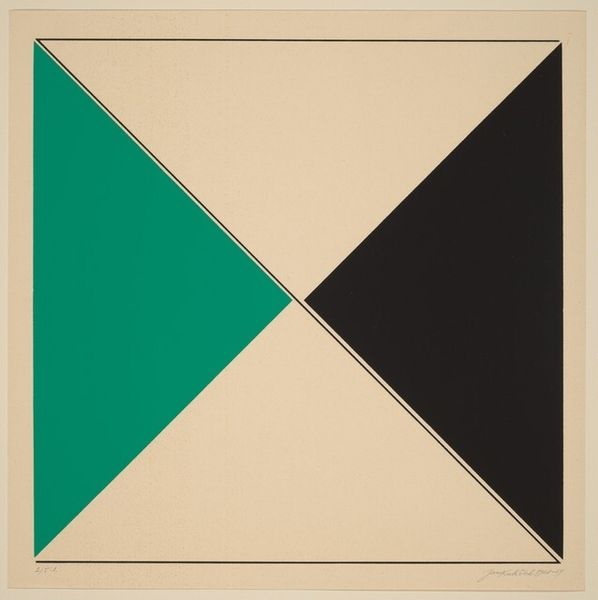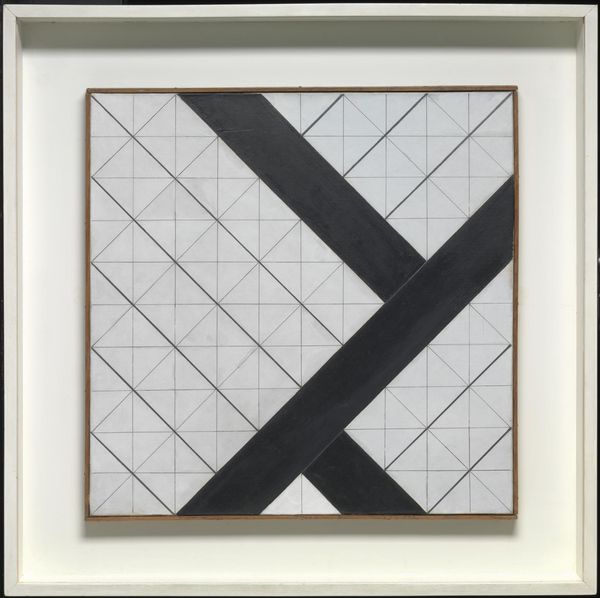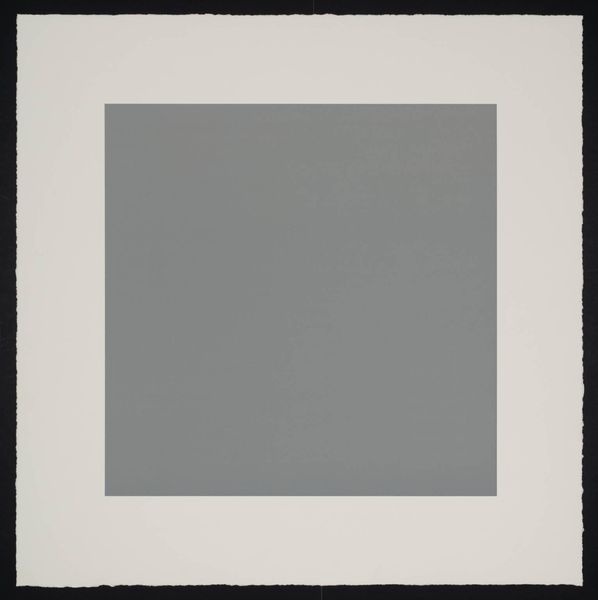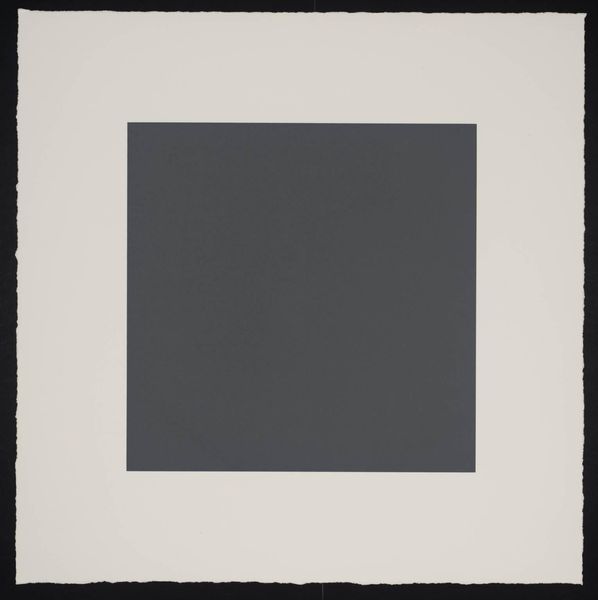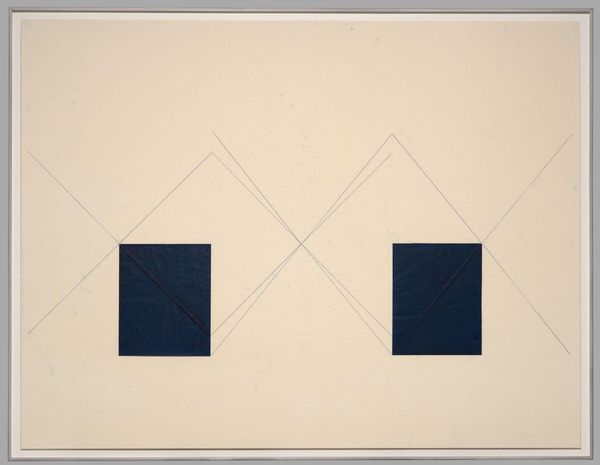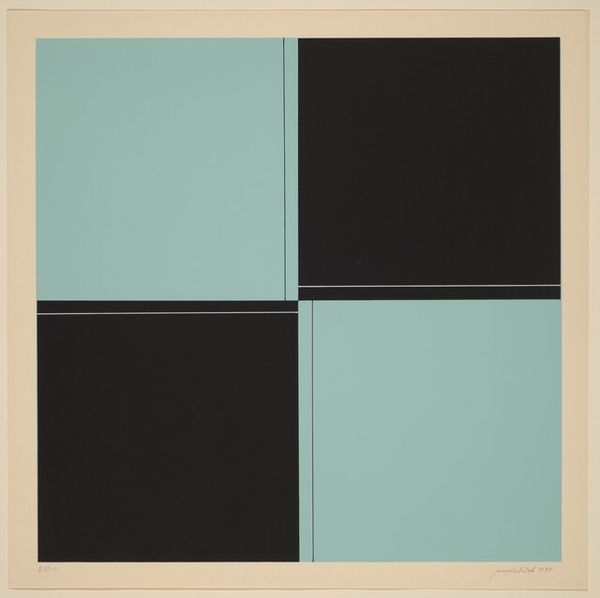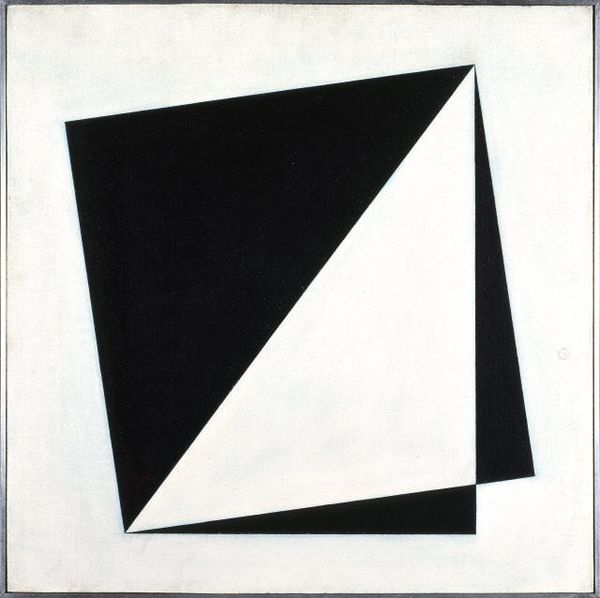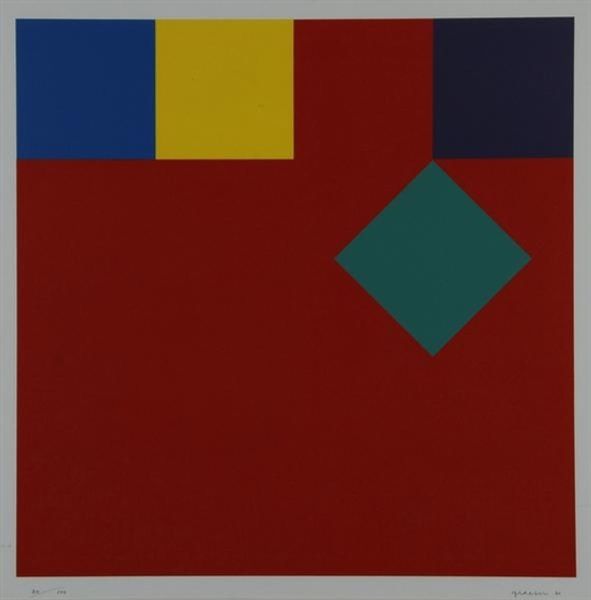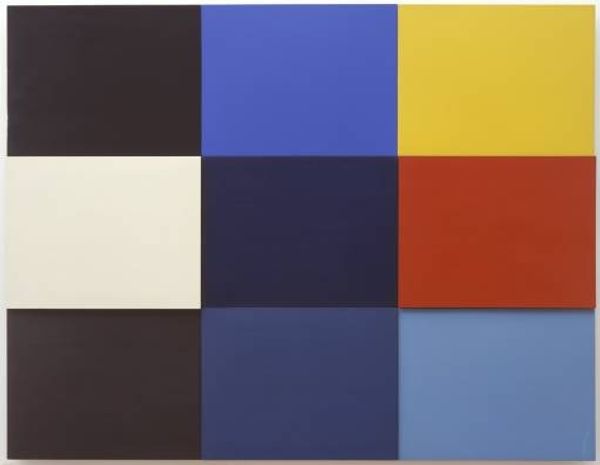
#
neo-plasticism
#
minimalism
# print
#
colour-field-painting
#
geometric pattern
#
geometric
#
abstraction
#
hard-edge-painting
Dimensions: image: 40 x 40 cm (15 3/4 x 15 3/4 in.) sheet: 43 x 43 cm (16 15/16 x 16 15/16 in.)
Copyright: National Gallery of Art: CC0 1.0
Curator: At first glance, this print, titled "Square with Principle 'Z'", feels so...clinical. Precise, almost unsettlingly balanced. Editor: I find that interesting. Tell me, what catches your eye first? The stark contrast, perhaps? This composition, dated to 1968-1969 by Jan Kubicek, throws into relief this visual problem by balancing yellow and black. Curator: Yes, the severe angles certainly command attention. In its historical context, you'd see this aligns neatly with hard-edge painting and minimalism, movements seeking objectivity, stripping art down to essential forms. The question I always come back to is, for whom were those forms considered essential, and to what end? It's so concerned with purification and flatness! Editor: I'd suggest to view each color as representing states of being: the yellow being enlightenment, darkness of night and unknown, and grey which covers most surface area suggests our earthly matter that exists. The geometric shapes aren’t accidental either - the triangles forming squares may very well carry specific geometric symbolism related to alchemical processes of creation, a visual language of transformation of our realities. Curator: An interesting point, the colors may echo certain zeitgeist elements: this kind of restrained geometry, the industrial cool… it’s an ideology imposed through aesthetics, a vision for ordered living reflected in everything from art to architecture. How that squares with alchemical thought I would be hard pressed to argue, except perhaps that modernity tried to dominate it, as well. Editor: It isn’t the visual equivalent of an shouted imperative - no! rather, something like an initiation. Each viewing allows its symbolic system deeper resonance, speaking the deeper myth of order hidden within these elementary shapes and tones. What remains is the core aesthetic question to answer - what did you *feel* as an immediate consequence when initially viewing the piece? Curator: A tension, mostly. Discomfort mingled with admiration for its sheer formal command. It's the emotional detachment, though, that I find ultimately problematic. And there the historical record supports that a tension did exist. Editor: In the end it isn’t easily reduced to the intentions or political climates of any epoch - it exists. To observe and feel what happens next as it exists now is how its meaning comes clear! Thank you.
Comments
No comments
Be the first to comment and join the conversation on the ultimate creative platform.
